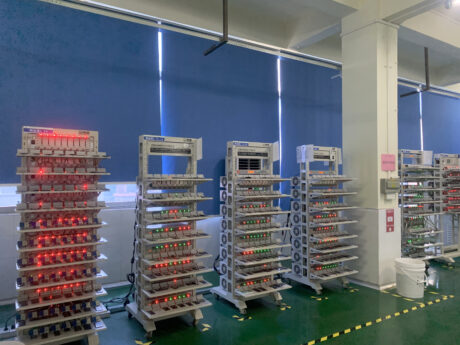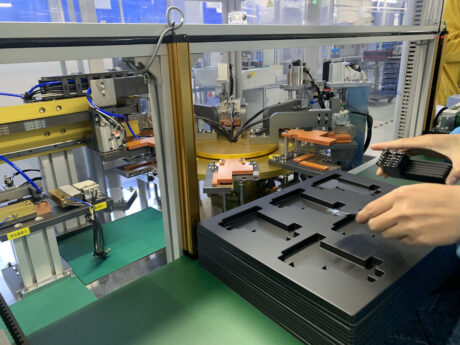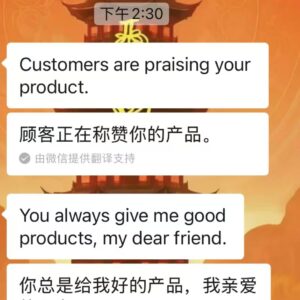

The supply was cut off overnight and the price of cobalt soared by 50%. How long can China’s lithium battery companies last?
China’s new energy industry has entered a state of emergency again overnight. This time, it is cobalt used in ternary lithium batteries that is stuck.
At the end of February, the Democratic Republic of the Congo announced that it would “suspend cobalt exports for four months to cope with the oversupply in the global cobalt market. This measure will be evaluated after three months, and the suspension may be adjusted or lifted according to the situation.”
This type of policy is not the first time. In 2022, the Democratic Republic of the Congo imposed a nine-month copper and cobalt export ban on Luoyang Molybdenum. Although the impact on global cobalt prices was limited at the time, the market situation is different now.
In just a few days, the price of cobalt salts soared by more than 37%, with the highest increase of nearly 50%. China’s new energy industry chain immediately fell into turmoil, catching companies off guard.
Ganfeng Lithium Battery was the first to issue a notice stating that suppliers of positive electrode materials have stopped quoting, and orders for positive electrode materials cannot be placed in the short term. All new orders need to reconfirm prices.
It seems that Chinese companies have a strong voice in the cobalt market, but in the end they still cannot withstand the risks brought by the policy adjustments of the country of origin.
On the one hand, there is the risk of a break in the cobalt supply, and on the other hand, there is the strategic intervention of the United States. The battle for mineral resources behind the ban is more complicated than expected.
Of course, our first concern is whether Chinese new energy companies can survive the four-month ban? Next, what changes may the market have in four months?
At present, the monthly cobalt production in the Democratic Republic of the Congo is about 16,500 tons. The four-month ban is expected to affect the supply of 60,000 to 70,000 tons of cobalt raw materials, equivalent to 25% of the global annual supply. This sudden contraction on the supply side will have a great impact on the market.
According to the forecast of the Jiufang Financial Research Institute, the global demand for cobalt this year is expected to be 280,000 to 290,000 tons. If the Democratic Republic of the Congo does not accelerate exports to make up for the gap after the ban ends (such as extending the export ban), then this year’s cobalt market will have a serious supply and demand gap, with demand exceeding supply, leading to market tension and price increases.
If we only look at the companies, generally speaking, the industry inventory cycle is 1 to 3 months. It seems that the ban period can be passed smoothly, but once it exceeds 4 months, the inventory is almost exhausted.
Based on customs data and the consumption of intermediate products required for refining in China, CRU estimates that the global cobalt intermediate inventory (including MHP associated cobalt inventory) is about 80,000 to 110,000 tons. These inventories are mainly distributed in smelters, traders and battery industry chain companies, and are mainly used to produce cobalt salts, metal cobalt and precursor materials.
According to the current global consumption rate of refined cobalt, this part of the inventory can support 5 to 7 months of refining demand.
But this forecast is still relatively conservative.
Not all intermediate product inventories can be put into production immediately, and some of them are still in the transportation or storage stage. The actual amount that can be used for refining may be lower than the theoretical estimate. Therefore, the worry that “cobalt will be cut off in 3 months” is not groundless.
More importantly, the shipping cycle from Congo (Kinshasa) to China is as long as 70-80 days, which means that the real impact of the ban may be further manifested in July 2025. By then, the smelter inventory will be almost exhausted.
Faced with tight supply, companies usually choose to control shipments rather than quickly consume inventory, which will further push up cobalt salt prices.
This is an extremely dangerous signal for downstream lithium battery companies. It is estimated that every 10% increase in cobalt prices will lead to an increase of about 2%-3% in the overall cost of ternary lithium batteries. If the cobalt price continues to rise by more than 50%, the production cost of power batteries may increase by 8%-15%.
Of course, Chinese companies are currently mainly lithium iron phosphate batteries, and the more affected are Korean and Japanese battery companies that mainly produce ternary batteries.
However, this supply chain and price crisis is more like a “reverse lesson” for Chinese new energy companies.
Judging from the root cause of the ban issued by the Democratic Republic of the Congo, its purpose is to raise the price of cobalt through administrative intervention, enhance its own bargaining power, and thereby obtain more fiscal revenue.
Data shows that after the first quarter of 2022, the price of cobalt has shown a fluctuating downward trend, which has lasted for nearly three years. At the beginning of 2025, the price of cobalt has fallen to a nearly 20-year low.
This is largely related to the “low-price competition” strategy of Chinese companies in the supply chain.
For a long time, in order to reduce production costs, Chinese new energy companies have continuously lowered the purchase price of raw materials in the cobalt supply chain to “support” the price war in the new energy industry.
At present, some companies are “overwhelmed”. According to a report by Bloomberg on March 6, a mining company controlled by China Minmetals Resources Co., Ltd. (MMG) closed its cobalt processing plant in the Democratic Republic of the Congo. The plant was forced to stop production after only 15 months of formal operation because the price of cobalt, an important battery metal, suffered a historic plunge.
The suspension of a cobalt processing plant is only a superficial phenomenon. This low-price strategy has seriously affected the stability of the supply chain and will eventually cost the entire industry chain a greater price.
It should be noted that China’s cobalt resource reserves are only 1.13% of the world’s total, and China’s external dependence on cobalt mines is 98.41%. But at the same time, China’s cobalt demand accounts for more than half of the world’s total.
Therefore, if China’s new energy industry wants to develop sustainably, companies must re-examine the global mineral resource layout to reduce dependence on a single origin and enhance supply chain resilience.
In addition to the Democratic Republic of the Congo, Zambia, Madagascar, South Africa, Australia and other countries also have rich cobalt resources. Some Chinese companies have begun to deploy in these countries, but the overall scale is still small, such as Zijin Mining and Huayou Cobalt’s investment in South Africa and Madagascar respectively.
As the world’s second largest nickel producer, Indonesia has a large amount of cobalt resources in its nickel ore, with reserves of 2.285 million tons, second only to the Democratic Republic of the Congo. According to the latest report of S&P Global, Indonesia’s cobalt supply is expected to increase by 50.7% year-on-year in 2024.
Not long ago, Huayou Cobalt announced that the second phase of its Indonesian annual production of 50,000 tons of high-nickel power battery ternary precursor material project was fully completed on February 28 and is about to enter the ramp-up stage, aiming to use Indonesia’s nickel and cobalt resources to fill the supply gap.
With the ever-changing international policies, the intervention of the United States and the adjustment of the supply chain, whether Chinese companies can survive this storm depends on who can make a good strategic layout first.
Whoever can take a long-term view can develop longer.



